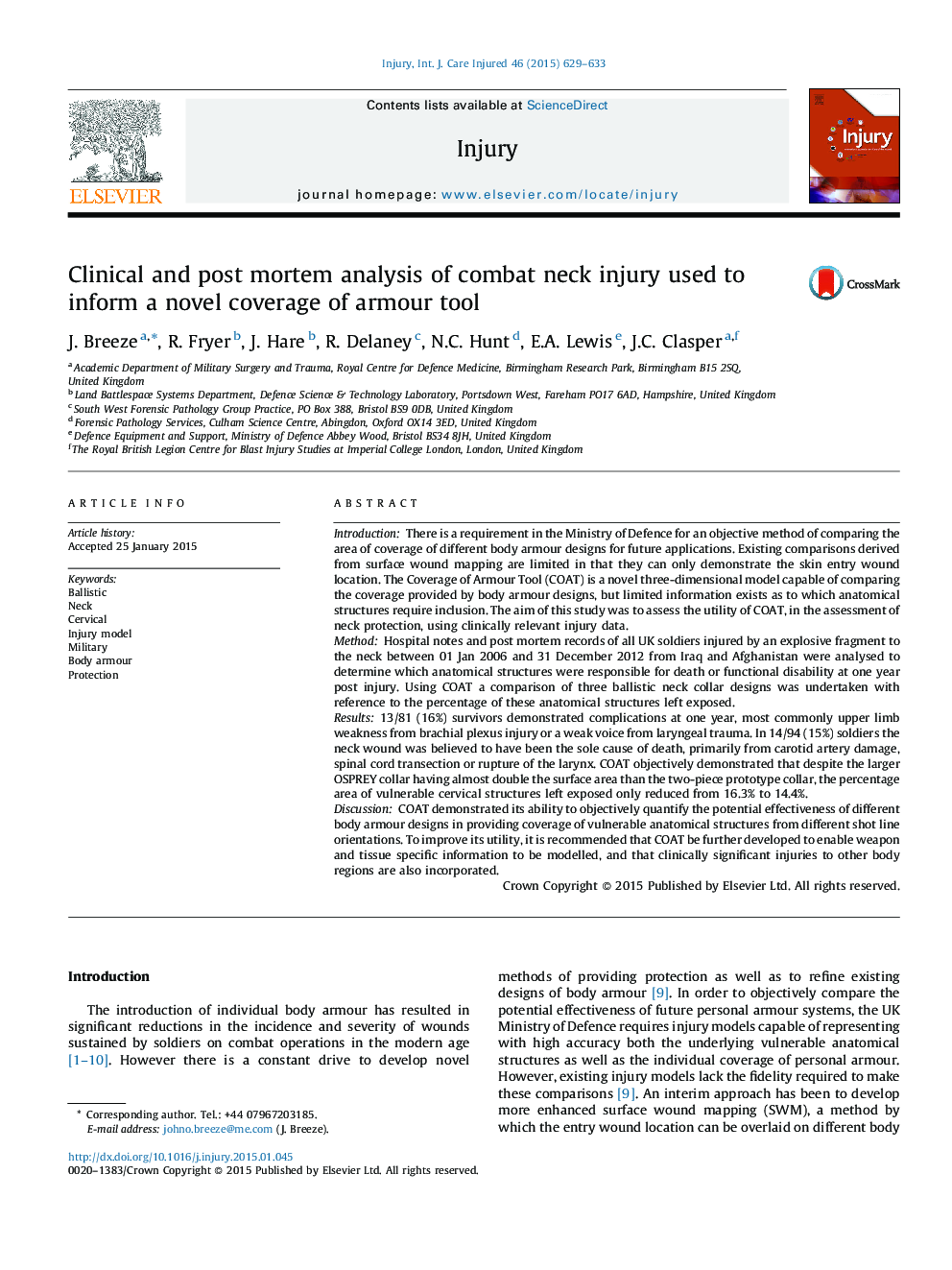| کد مقاله | کد نشریه | سال انتشار | مقاله انگلیسی | نسخه تمام متن |
|---|---|---|---|---|
| 3239056 | 1205981 | 2015 | 5 صفحه PDF | دانلود رایگان |
IntroductionThere is a requirement in the Ministry of Defence for an objective method of comparing the area of coverage of different body armour designs for future applications. Existing comparisons derived from surface wound mapping are limited in that they can only demonstrate the skin entry wound location. The Coverage of Armour Tool (COAT) is a novel three-dimensional model capable of comparing the coverage provided by body armour designs, but limited information exists as to which anatomical structures require inclusion. The aim of this study was to assess the utility of COAT, in the assessment of neck protection, using clinically relevant injury data.MethodHospital notes and post mortem records of all UK soldiers injured by an explosive fragment to the neck between 01 Jan 2006 and 31 December 2012 from Iraq and Afghanistan were analysed to determine which anatomical structures were responsible for death or functional disability at one year post injury. Using COAT a comparison of three ballistic neck collar designs was undertaken with reference to the percentage of these anatomical structures left exposed.Results13/81 (16%) survivors demonstrated complications at one year, most commonly upper limb weakness from brachial plexus injury or a weak voice from laryngeal trauma. In 14/94 (15%) soldiers the neck wound was believed to have been the sole cause of death, primarily from carotid artery damage, spinal cord transection or rupture of the larynx. COAT objectively demonstrated that despite the larger OSPREY collar having almost double the surface area than the two-piece prototype collar, the percentage area of vulnerable cervical structures left exposed only reduced from 16.3% to 14.4%.DiscussionCOAT demonstrated its ability to objectively quantify the potential effectiveness of different body armour designs in providing coverage of vulnerable anatomical structures from different shot line orientations. To improve its utility, it is recommended that COAT be further developed to enable weapon and tissue specific information to be modelled, and that clinically significant injuries to other body regions are also incorporated.
Journal: Injury - Volume 46, Issue 4, April 2015, Pages 629–633
